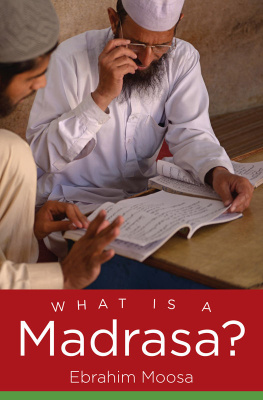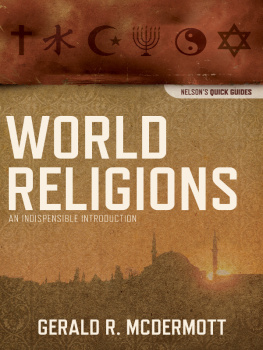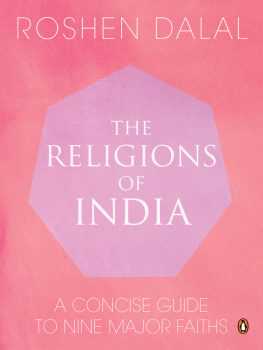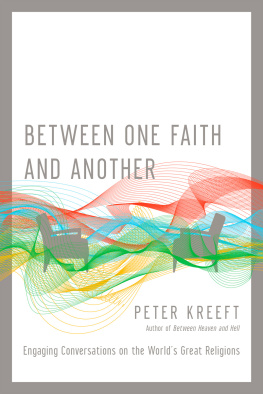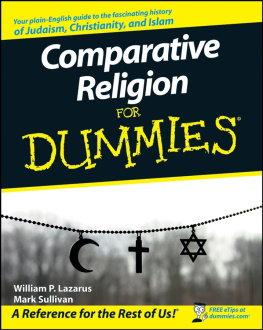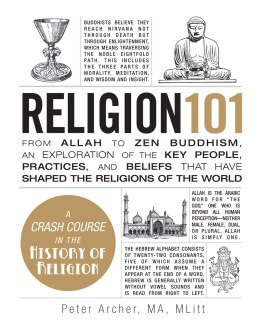

Copyright 2014 by McGraw-Hill Education. All rights reserved. Except as permitted under the Copyright Act of 1976, no part of this publication may be reproduced or distributed in any form or by any means, or stored in a database or retrieval system, without the prior written permission of publisher.
e-ISBN 978-0-07-177023-1
e-MHID 0-07-177023-2
The material in this eBook also appears in the print version of this title: ISBN 978-0-07-177022-4, MHID 0-07-177022-4
All trademarks are trademarks of their respective owners. Rather than put a trademark symbol after every occurrence of a trademarked name, we use names in an editorial fashion only, and to the benefit of the trademark owner, with no intention of infringement of the trademark. Where such designations appear in this book, they have been printed with initial caps.
McGraw-Hill Education books are available at special quantity discounts to use as premiums and sales promotions, or for use in corporate training programs. To contact a special sales representative, please visit the Contact Us page at www.mhprofessional.com.
TERMS OF USE
This is a copyrighted work and The McGraw-Hill Companies, Inc. (McGraw-Hill) and its licensors reserve all rights in and to the work. Use of this work is subject to these terms. Except as permitted under the Copyright Act of 1976 and the right to store and retrieve one copy of the work, you may not decompile, disassemble, reverse engineer, reproduce, modify, create derivative works based upon, transmit, distribute, disseminate, sell, publish or sublicense the work or any part of it without McGraw-Hills prior consent. You may use the work for your own noncommercial and personal use; any other use of the work is strictly prohibited. Your right to use the work may be terminated if you fail to comply with these terms.
THE WORK IS PROVIDED AS IS. McGRAW-HILL AND ITS LICENSORS MAKE NO GUARANTEES OR WARRANTIES AS TO THE ACCURACY, ADEQUACY OR COMPLETENESS OF OR RESULTS TO BE OBTAINED FROM USING THE WORK, INCLUDING ANY INFORMATION THAT CAN BE ACCESSED THROUGH THE WORK VIA HYPERLINK OR OTHERWISE, AND EXPRESSLY DISCLAIM ANY WARRANTY, EXPRESS OR IMPLIED, INCLUDING BUT NOT LIMITED TO IMPLIED WARRANTIES OF MERCHANTABILITY OR FITNESS FOR A PARTICULAR PURPOSE. McGraw-Hill and its licensors do not warrant or guarantee that the functions contained in the work will meet your requirements or that its operation will be uninterrupted or error free. Neither McGraw-Hill nor its licensors shall be liable to you or anyone else for any inaccuracy, error or omission, regardless of cause, in the work or for any damages resulting therefrom. McGraw-Hill has no responsibility for the content of any information accessed through the work. Under no circumstances shall McGraw-Hill and/or its licensors be liable for any indirect, incidental, special, punitive, consequential or similar damages that result from the use of or inability to use the work, even if any of them has been advised of the possibility of such damages. This limitation of liability shall apply to any claim or cause whatsoever whether such claim or cause arises in contract, tort or otherwise.
To obtain the downloadable PDF format of this eBook, please .
Contents
Introduction
Demystifying Religion: Why Now? Why Here? Why Bother?
Some skeptics argue that any attempt to demystify world religions is unjustifiable, doomed to failure, or both. They ask questions like, Arent matters of faith inherently subjective, and therefore mysterious to outsiders? Shouldnt we simply accept the reality that unfamiliar religious issues can be controversial (and perhaps even dangerous) to any who attempt to resolve their mysteries? Isnt religion itself inherently ambiguous ... and best left that way?
This book assumes that the best answer to these questions is no. Like the other books in the Demystified series, it is designed as a classroom adjunct for students who are taking courses on the subject at the college level; given the topic we have chosen, however, we think what follows will also be useful for curious armchair learners of all ages and backgrounds. Regardless of whether youre studying for a course, this book begins from the premise that the more you learn about unfamiliar aspects of any faith tradition (whether its yours or someone elses) the better off you are. There are two main reasons for this approach.
First, we live in a time when violence, conflict, and social instabilitywhether on the local, national, or international levelare increasingly perceived as connected to the way people worship (or dont). Whether that perception is accurate or inaccurate in our own personal experience is irrelevant; many people are now willing to do truly terrible things in the name of all the major religions. Even if we ourselves have not experienced thiseven if we ourselves have no settled, formal approach to worshipeven if we personally decline the possibility of worship altogetherthe stakes are high, and ignorance makes them higher still.
Second, the question of what religion actually means is itself deeply unsettled, and that appears to be part of the problem. A common modern Western perception is that religion is a private matter, separate from larger society, and not something to be mixed with, say, politics or education. Many people in cultures outside of the United States, Europe, and Australia, however, are likely to view their own beliefs, rituals of worship, and spiritual practice as part of a common life and not a private belief. Indeed, many believers have been inclined to view the separation of religious values from other values as a profound cultural shock that has been accelerating in various ways for at least a century.
We believe these two issues are interrelated. We believe that the instability is intensified by the cultural divide over whether there is or should be a private realm for religion, and vice versa. We believe that a great gap has been widening. Whats more, we believe that the only responsibleand perhaps the only saneresponse to this dynamic is to demystify each major faith system in as many of its particulars as possible.
To demystify religion is simply to acknowledge and honor the possibility of differing perspectives. To demystify means to ask questions about perspective: Who is speaking? Who is naming things in and about a given religion? Often, we find that we face the age-old insider/outsider problem. A participants viewpoint is called emic, to use the terminology of the social scientist. In contrast, the view of a nonparticipant or an outsider is called etic. To demystify is to illuminate as many of the potential blind spots arising from these differing perspectives as possible, to support efforts that enhance mutual understanding about faith and worship and advance the common good. This has more to do with tolerance and respect than it does with division and discord.
The timeline of our young twenty-first century already suggests that humanity has far more blind spots related to this subject than necessary. The more blind spots remain about how people around the world worship, and why they believe as they do, the deeper the mysteryand the greater the potential for paranoia, extremism, and mistrust.
Responsible demystification is the only way we know of to cast light on such blind spots. And that is what we aim to undertake here. Responsible demystification means learning about other faiths with empathyidentifying with and showing understanding for the feelings, motives, and situations of othersand not make hasty judgments about others without proper information, knowledge, and understanding. Demystification takes courage, but it is worth the effort because it means more information, more knowledge, and more understanding of the religions of the world.
Next page

